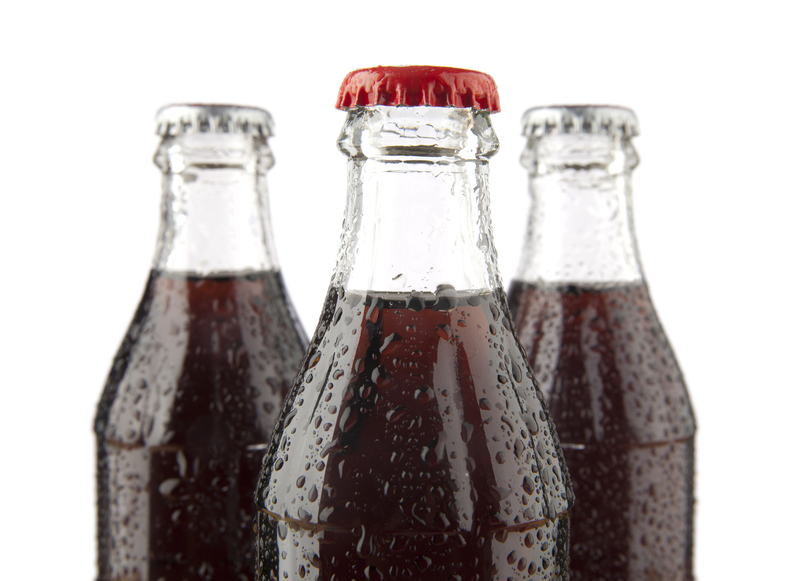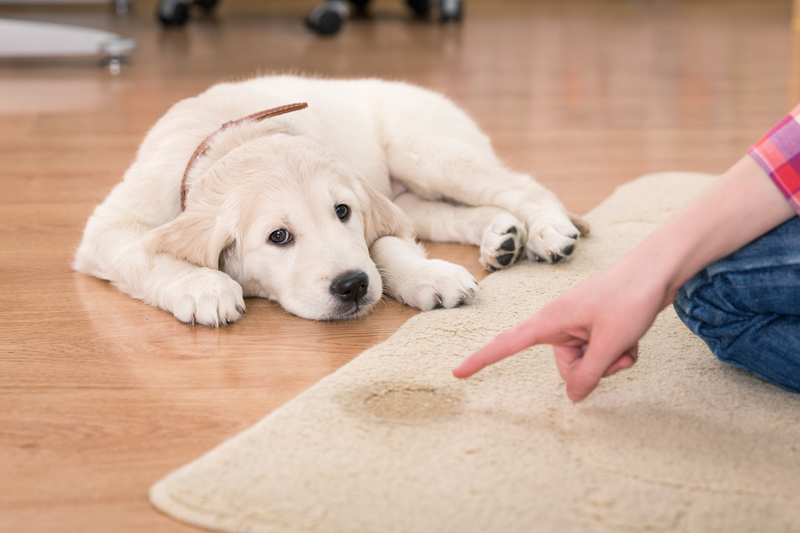Transform Your uPVC Window Frames with Effective Cleaning Methods
Posted on 03/07/2025
Transform Your uPVC Window Frames with Effective Cleaning Methods
Are your uPVC window frames looking tired, dull, or grimy? uPVC (unplasticized Polyvinyl Chloride) window frames are coveted for their resilience, low maintenance, and long-lasting aesthetics. However, like any part of your home, they do need care and attention to retain their pristine look and functionality. In this comprehensive guide, you'll discover the most effective cleaning methods to transform your uPVC window frames, helping you enhance your home's appeal and extend the life of your windows.

Why It's Important to Clean uPVC Window Frames
uPVC window frames are exposed to dust, dirt, pollution, pollen, and weather elements every day. Over time, this build-up not only affects their appearance but can also interfere with their operation. Regular cleaning prevents:
- Staining and Discoloration: Prolonged exposure to dirt or pollutants can cause permanent marks.
- Mould and Mildew Growth: Especially in damp climates, neglect can lead to unsightly and unhealthy mould.
- Mechanism Malfunction: Dirt and grime can hinder the smooth opening and closing of windows.
- Reduced Curb Appeal: Dirty windows influence your home's first impression and value.
Maintaining clean uPVC window frames is crucial not just for their looks, but also for functionality and longevity.
Understanding uPVC Window Frame Material
Before learning effective cleaning methods for uPVC windows, it's essential to understand the material itself. uPVC is a highly durable, lightweight plastic widely used in modern windows and doors. Unlike traditional wooden frames, uPVC doesn't rot, rust, or flake, making it an outstanding choice for various climates. However, its white or colored surface can lose its shine if not properly maintained.
How Often Should You Clean Your uPVC Window Frames?
For best results and long-lasting beauty, it's wise to clean your uPVC window frames every three to six months. Homes near busy roads, industrial areas, or coastal environments might need more frequent cleaning to combat pollutants and salt.
Pre-Cleaning Preparation: Gathering the Right Tools
The right equipment makes cleaning uPVC window frames easier and more efficient. Gather these materials before beginning:
- Soft cloths or microfiber towels
- Non-abrasive sponge
- Soft bristle brush or old toothbrush
- Bowl of warm water
- Mild dish soap
- Spray bottle
- White vinegar
- Bicarbonate of soda (baking soda)
- Window vacuum or squeegee
- Rubber gloves (optional for sensitive skin)
Avoid abrasive cloths, steel wool, solvent-based cleaners, or harsh chemicals as these can permanently scratch or discolor the uPVC surface.
Step-by-Step Guide: Effective Cleaning Methods for uPVC Window Frames
1. Dusting Off Loose Dirt and Debris
Begin by removing loose dust, cobwebs, and larger particles from the frame. Use a duster, soft brush, or vacuum with a brush attachment. Pay close attention to crevices and corners where dirt accumulates.
2. Preparing Your Cleaning Solution
The safest solution for routine uPVC cleaning is a mixture of:
- Warm water
- A splash of mild dish soap
3. Washing the Frames
Soak your soft cloth or non-abrasive sponge in the soapy water. Wring out excess liquid and gently wipe down the frames. For stubborn spots--such as dried bird droppings or grease--allow the solution to sit for a few minutes before wiping.
Never use rough scrubbing pads or aggressive cleaners, as these may damage the uPVC window frame or void manufacturer warranties.
4. Targeting Stubborn Stains
If you encounter stubborn stains or discoloration:
- Make a paste using bicarbonate of soda (baking soda) and water.
- Gently apply the paste to the stain using an old toothbrush.
- Let it sit for 5-10 minutes, then wipe clean with a damp cloth.
5. Finishing with a Clean Rinse
Once all dirt and stains are removed, rinse the frame with clean water using a fresh cloth to remove any soap or residue. This is crucial to avoid streaks or sticky build-up that can attract more dirt.
6. Polishing for a Lasting Shine
For extra shine, dry the surface with a clean, dry microfiber cloth. This not only prevents water drying marks but also buffs the uPVC, highlighting its natural gloss. Never use window polish, car wax or commercial silicon sprays unless they are specified for uPVC materials.
Advanced uPVC Window Frame Cleaning Techniques
Using Specialized uPVC Cleaners
Several brands offer dedicated uPVC frame cleaners. These non-abrasive sprays or creams are formulated to brighten and protect your frames. Always follow the manufacturer's instructions and test the cleaner on a small, inconspicuous area first.
Dealing with Yellowing or Faded Frames
Over time, external uPVC frames can yellow due to sun exposure and aging. To minimize this:
- Clean regularly to prevent staining agents from seeping into the surface.
- Try a specialist uPVC restorer--these products can revive the original color and shine, but be cautious and check product compatibility.
- Avoid household bleaches or strong solvents, which can exacerbate yellowing or compromise material integrity.
Removing Mould and Algae Growth
Mould and algae can mar the appearance of uPVC window frames, especially in shaded or damp areas. Combat this by:
- Applying a mixture of warm water, vinegar, and a dash of baking soda to affected areas.
- Gently scrubbing with a soft brush.
- Drying thoroughly afterwards, as moisture encourages regrowth.
Essential Maintenance Tips for Pristine uPVC Window Frames
Keep your uPVC window frames looking like new for years by following these expert tips:
- Clean Regularly: A quick wipe every few weeks saves time and prevents buildup.
- Lubricate Moving Parts: Apply a small amount of silicone spray to hinges, handles, and locks every 6 months.
- Check Drainage Holes: Ensure the drainage holes at the bottom of the frame are clear to prevent water accumulation and internal damage.
- Avoid Direct Jet Washing: High pressure can damage seals and force water inside.
- Don't Paint uPVC: Painting damages the material and can void your warranty. If color change is desired, consult a professional for wrapping or specialist coating options.
- Inspect and Seal: Examine frames annually for any cracks or wear and re-seal edges as necessary.
Frequent Mistakes to Avoid When Cleaning uPVC Frames
- Don't use scouring pads or harsh brushes: These will leave scratches.
- Never use solvent-based or colored creams: They can cause permanent staining or damage the frame surface.
- Avoid bleach and ammonia: Powerful chemicals can attack uPVC's structure.
- Never ignore seals and rubber gaskets: Dirty or dried-out seals can crack and fail, leading to drafts and leaks.
Eco-Friendly and DIY Cleaning Alternatives for uPVC Window Frames
If you prefer natural cleaning solutions or want to minimize use of chemicals, you can achieve sparkling uPVC frames by:
- Vinegar and Water: Mix 1 part distilled white vinegar with 4 parts water in a spray bottle. Spray, wait a few minutes, and wipe--this tackles most grime and light stains on uPVC window frames.
- Baking Soda Paste: Combine baking soda and water to make a gentle scrubbing paste for stubborn marks.
- Lemon Juice: Lemon's natural acidity helps dissolve minor stains and leaves a pleasant scent. Wipe with a clean damp cloth to finish.
The Role of Professional Cleaning for uPVC Window Frames
If your uPVC frames suffer from severe discoloration, heavy staining, or accumulated grime that's hard to remove, consider calling a professional. Experts use specialist uPVC cleaning products and equipment to restore your frames safely. This may cost more, but it guarantees flawless results and can often transform your uPVC windows to a near-new appearance.
Enhancing Curb Appeal: The Impact of Clean uPVC Frames
A simple but thorough cleaning of your window frames can make a remarkable difference to both the external and internal appeal of your home. Fresh, clean windows let in more light, look more inviting, and reflect positively on your property's value. Regular attention to your uPVC window frames extends their lifespan, protecting your investment in modern windows for years to come.

Frequently Asked Questions About Cleaning uPVC Window Frames
Can I use bleach or acetone?
No. Bleach and acetone are too harsh--they can discolor and weaken the material. Stick to mild detergents or products specifically designed for uPVC.
What should I do if my frames are yellowing?
Use a specialist uPVC restorer or consult a professional. Avoid using abrasive pads or household cleaners as they can worsen discoloration.
How can I prevent mould growth on my frames?
Wipe down frames regularly, ensure good ventilation, and address leaks or draughts promptly. If mould appears, treat it with vinegar and water or an anti-mould spray suitable for uPVC.
Is power washing safe?
No. High-pressure washing can damage seals and force water into window frames, potentially leading to internal damage and leaks.
Conclusion: Reveal the Full Potential of Your uPVC Window Frames
Keeping your uPVC window frames spotless not only protects your investment but also dramatically enhances your home's charm and energy efficiency. Whether you use gentle, eco-friendly DIY solutions or opt for professional cleaning, following these tested uPVC window cleaning methods will ensure your window frames keep their brilliance through every season. Incorporate regular cleaning into your household routine and see your uPVC windows shine like never before!
Want more expert home maintenance advice? Bookmark this guide and revisit it as needed to keep your windows--and entire home--looking their absolute best.




